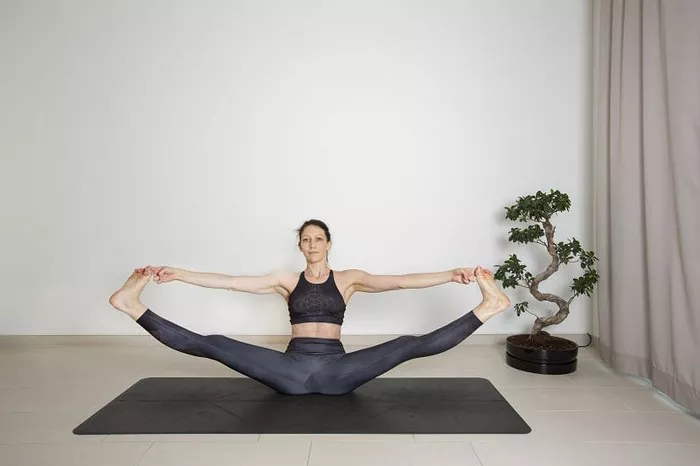Yoga is an ancient discipline that combines physical postures, breathing exercises, meditation, and ethical practices to promote holistic well-being. Over time, several forms of yoga have evolved, each with its unique focus and approach to achieving the ultimate goal of self-realization and spiritual liberation. Two of the most well-known branches of yoga are Kriya Yoga and Raja Yoga. While they share some similarities, particularly in their spiritual aims and emphasis on meditation, they are distinct in their practices and methods.
This article will explore the key differences between Kriya Yoga and Raja Yoga, providing a comprehensive understanding of both traditions and their unique contributions to the spiritual path.
What is Kriya Yoga?
Kriya Yoga is an advanced system of meditation and yogic practices that focuses on the control and regulation of the breath, the mind, and the energy within the body. The word “Kriya” in Sanskrit translates to “action” or “work,” signifying the active nature of this practice. Kriya Yoga is considered a powerful tool for purifying the body and mind, enabling practitioners to accelerate their spiritual progress and attain a higher state of consciousness.
Kriya Yoga was popularized in the modern era by Paramahansa Yogananda, the founder of the Self-Realization Fellowship, who introduced the teachings of Kriya Yoga to the West. The practice, however, has ancient roots in the yogic tradition, with references to Kriya Yoga found in the writings of various sages and saints.
At its core, Kriya Yoga emphasizes the following practices:
Pranayama (Breathing Exercises): The cornerstone of Kriya Yoga is pranayama, which refers to the controlled practice of breathing. Pranayama techniques are used to regulate the flow of life force energy (prana) throughout the body. By mastering breath control, Kriya yogis can purify their energy channels (nadis) and balance their physical, mental, and spiritual health.
Dhyana (Meditation): Meditation is an essential component of Kriya Yoga. The practice of Kriya involves deep concentration and inner stillness, allowing the practitioner to enter higher states of consciousness. The goal is to still the mind, allowing the practitioner to experience union with the divine and realize their true nature.
Kriyas (Sacred Actions): Kriya Yoga involves a series of specific techniques, often referred to as “Kriyas,” which are designed to purify the body and mind. These techniques include advanced pranayama practices, specific meditation methods, and concentration exercises that help the practitioner go beyond ordinary experiences and access higher states of awareness.
The primary aim of Kriya Yoga is to accelerate the spiritual journey, helping practitioners to reach a state of direct communion with the divine and attain self-realization. The ultimate goal of Kriya Yoga is to transcend the limitations of the body and mind and experience oneness with the supreme consciousness.
What is Raja Yoga?
Raja Yoga, often called the “royal path” or “king of yogas,” is one of the most comprehensive and complete systems of yoga. The term “Raja” translates to “king” or “royalty” in Sanskrit, implying that this is the highest or most supreme form of yoga. Raja Yoga is often referred to as the yoga of meditation, as it places a strong emphasis on mental discipline and the cultivation of inner stillness.
Raja Yoga is primarily based on the teachings of the great sage Patanjali, whose work, the Yoga Sutras of Patanjali, outlines the eightfold path (Ashtanga Yoga) that leads to self-realization and spiritual liberation. This eightfold path serves as a practical guide for living a balanced and harmonious life while developing the mental and physical discipline necessary for meditation.
The eight limbs (Ashtanga) of Raja Yoga are as follows:
Yama (Moral Disciplines): The ethical guidelines that form the foundation of a yogic lifestyle. These include non-violence (ahimsa), truthfulness (satya), non-stealing (asteya), self-control (brahmacharya), and non-possessiveness (aparigraha).
Niyama (Observances): The personal disciplines that support spiritual growth, such as purity (saucha), contentment (santosha), austerity (tapas), self-study (svadhyaya), and surrender to the divine (Ishvara pranidhana).
Asana (Physical Postures): The physical practices that promote health, flexibility, and strength. Asanas are the foundation for developing concentration and preparing the body for meditation.
Pranayama (Breathing Techniques): Like Kriya Yoga, Raja Yoga incorporates pranayama to regulate the flow of prana (life energy) and balance the mind and body. However, in Raja Yoga, pranayama is practiced as part of the overall approach to meditation.
Pratyahara (Withdrawal of the Senses): This limb involves detaching from external distractions and turning the senses inward. By practicing pratyahara, practitioners develop the ability to focus their attention on the inner world, facilitating deeper meditation.
Dharana (Concentration): The practice of concentration involves focusing the mind on a single object, thought, or mantra. This step is essential for cultivating the mental discipline required for meditation.
Dhyana (Meditation): Meditation in Raja Yoga is the process of quieting the mind and achieving a state of deep inner stillness. Through sustained meditation practice, practitioners move toward higher states of consciousness and self-realization.
Samadhi (Union): The ultimate goal of Raja Yoga is to achieve samadhi, a state of complete union with the divine or ultimate reality. In samadhi, the practitioner transcends the ego and experiences a profound sense of oneness with the universe.
Raja Yoga is a systematic, step-by-step approach to spiritual awakening, and its primary aim is to train the mind to be still and focused. Through the practice of meditation and self-discipline, Raja Yoga provides a comprehensive path to spiritual liberation and the realization of one’s true nature.
Key Differences Between Kriya Yoga and Raja Yoga
While both Kriya Yoga and Raja Yoga aim for spiritual enlightenment and self-realization, they differ in their approaches, methods, and areas of emphasis. Here are the key differences between the two:
1. Focus and Emphasis
Kriya Yoga: The primary focus of Kriya Yoga is on controlling and purifying the breath (pranayama) and energy within the body. Kriya yogis use specific techniques, known as Kriyas, to cleanse the body and mind, accelerate spiritual progress, and attain higher states of consciousness. The emphasis is on inner transformation through the regulation of energy and breath.
Raja Yoga: Raja Yoga, on the other hand, emphasizes a holistic approach to spiritual growth that includes ethical living, physical discipline, concentration, and meditation. It follows the eightfold path as outlined in the Yoga Sutras of Patanjali, with a special focus on mental discipline and meditation. The goal of Raja Yoga is to cultivate a calm, focused mind and achieve union with the divine.
2. Methodology
Kriya Yoga: The methodology of Kriya Yoga revolves around advanced breathing techniques (pranayama) and meditative practices that are designed to purify the mind and accelerate spiritual progress. Kriya Yoga involves specific rituals, techniques, and practices that aim to directly influence the subtle body and energy centers (chakras) to awaken spiritual consciousness.
Raja Yoga: Raja Yoga is more of a gradual, step-by-step approach that emphasizes the development of both external and internal disciplines. The eight limbs of Raja Yoga provide a comprehensive guide to living a balanced and harmonious life, ultimately leading the practitioner to the stilling of the mind and the realization of oneness with the divine. Meditation is central to Raja Yoga, but it is preceded by the ethical guidelines and physical practices that help prepare the practitioner for deeper concentration and meditation.
3. Role of Breath Control
Kriya Yoga: In Kriya Yoga, pranayama (breathing exercises) is central to the practice. The regulation of breath is used as a tool to control the mind and body, and it plays a significant role in achieving higher states of consciousness and self-realization. Kriya techniques work directly with the prana (life force) and energy channels in the body.
Raja Yoga: While pranayama is also an important aspect of Raja Yoga, it is one of many practices used to prepare the body and mind for meditation. Breath control in Raja Yoga is often seen as a means to achieve concentration and mental clarity, rather than the primary method for achieving spiritual liberation.
4. Spiritual Approach
Kriya Yoga: Kriya Yoga is often seen as a more direct and intense method for achieving spiritual progress. Its emphasis on breath control and energy manipulation allows practitioners to accelerate their spiritual development and attain higher states of awareness more quickly.
Raja Yoga: Raja Yoga is typically considered a more gradual and comprehensive path to spiritual enlightenment. It provides a balanced approach, integrating ethical practices, physical discipline, mental focus, and meditation. Raja Yoga is often considered suitable for those who seek a systematic and well-rounded path to spiritual growth.
5. Transmission of Knowledge
Kriya Yoga: Kriya Yoga is often passed down through direct initiation from a guru to the disciple. It is considered an esoteric practice, with many Kriya techniques taught only to advanced students who have received proper training and guidance.
Raja Yoga: Raja Yoga is more accessible in terms of the teachings and practices. It is widely taught in many yoga schools and is often available in books and online resources. Although personal guidance from a teacher is beneficial, the fundamental principles of Raja Yoga are often available to a broader audience.
Conclusion
Kriya Yoga and Raja Yoga are both powerful and transformative paths that can lead to self-realization and spiritual awakening. While Kriya Yoga is more focused on the direct control and purification of the breath and energy, Raja Yoga provides a comprehensive framework for personal development, including ethical conduct, physical discipline, and meditation. Both systems share the ultimate goal of achieving oneness with the divine and transcending the limitations of the ego, but they approach this goal in different ways.
For practitioners, the choice between Kriya Yoga and Raja Yoga may depend on their personal preferences, spiritual inclinations, and the guidance of their teachers. Both paths offer profound benefits, and whether one chooses to follow the intense methods of Kriya Yoga or the systematic approach of Raja Yoga, the journey toward self-realization is a deeply rewarding and transformative experience.
Related Topics:













